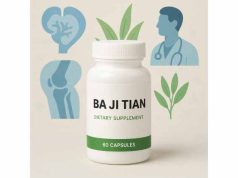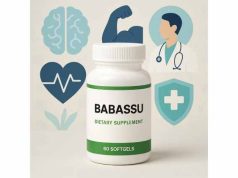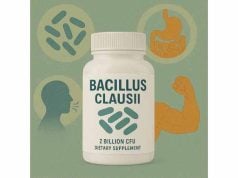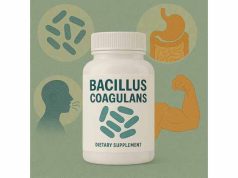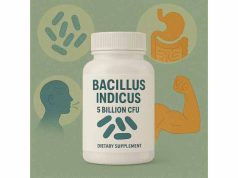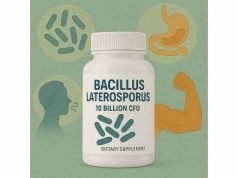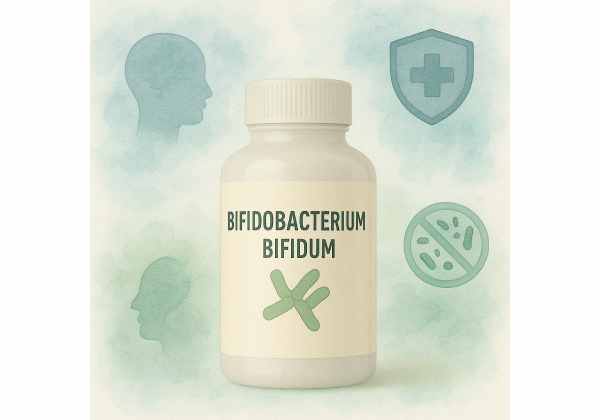
Bifidobacterium bifidum is a foundational probiotic species with a long history of supporting digestive health, immune balance, and overall well-being. Found naturally in the human gut from infancy onward, B. bifidum plays a crucial role in maintaining a balanced microbiome and protecting against harmful bacteria. Today, this powerful probiotic is commonly included in supplements and fortified foods, valued for its ability to improve regularity, soothe digestive discomfort, and even help the body resist infections. Understanding how B. bifidum works, who benefits most, and how to use it safely can empower you to make better choices for your gut health and overall vitality.
Key Takeaways
- Bifidobacterium bifidum helps restore gut flora, supports digestion, and protects against harmful microbes.
- It may reduce the risk and severity of diarrhea, IBS symptoms, and allergies.
- Generally safe for daily use in healthy adults and children; side effects are rare and mild.
- Works best when combined with other probiotic strains and a fiber-rich, gut-friendly diet.
- Consult a healthcare professional before use if you have a weakened immune system or serious health conditions.
Table of Contents
- Bifidobacterium bifidum Fundamentals and Unique Probiotic Properties
- Scientific Mechanisms and Biological Actions of Bifidobacterium bifidum
- Research-Backed Health Benefits and Practical Uses of Bifidobacterium bifidum
- Detailed Safety Overview, Side Effects, and Precautions for Bifidobacterium bifidum
- Dosage, Forms, Timing, and Best Practices for Bifidobacterium bifidum Supplementation
- Frequently Asked Questions About Bifidobacterium bifidum
Bifidobacterium bifidum Fundamentals and Unique Probiotic Properties
Bifidobacterium bifidum is a Gram-positive, anaerobic bacterium, meaning it thrives without oxygen and is a natural resident of the human gastrointestinal tract. Unlike many transient bacteria, B. bifidum is one of the first species to colonize the infant gut and often remains present throughout adulthood, contributing to lifelong digestive health.
What Makes Bifidobacterium bifidum Special?
- Natural colonizer: B. bifidum is especially abundant in breastfed infants, where it helps shape the developing microbiome and immune system.
- Diverse locations: It is found along the entire digestive tract, especially in the large intestine, and can also be present in the vaginal and oral microbiota.
- Barrier protection: This probiotic helps maintain the mucosal barrier, the thin layer that separates gut contents from the bloodstream, offering crucial defense against pathogens.
Strain Diversity and Product Forms
- Common B. bifidum strains in supplements include BB-06, MIMBb75, and others—each with distinct benefits.
- B. bifidum is often combined with other probiotic species in multi-strain blends for comprehensive support.
What Are Its Main Functions in the Gut?
- Breakdown of complex carbohydrates: B. bifidum ferments plant fibers, producing beneficial short-chain fatty acids (SCFAs) like acetate and lactate, which fuel gut cells and support immune balance.
- Inhibition of harmful bacteria: By lowering the gut pH and producing natural antimicrobial substances, B. bifidum helps outcompete pathogens.
- Support for nutrient absorption: This species assists in digesting complex sugars, proteins, and even certain vitamins, supporting overall nutrient uptake.
Who Benefits Most from B. bifidum Supplementation?
- Infants and young children: Helps establish a strong gut microbiome, especially in formula-fed or C-section-delivered babies.
- Adults and seniors: Supports regularity, immune defense, and digestive comfort.
- Those recovering from antibiotics or illness: Helps restore beneficial flora and rebalance the gut ecosystem.
Everyday Wellness
With its deep roots in human health, Bifidobacterium bifidum is recognized as a core probiotic for daily maintenance, prevention of gastrointestinal issues, and overall resilience.
Scientific Mechanisms and Biological Actions of Bifidobacterium bifidum
Bifidobacterium bifidum’s powerful impact on health stems from a series of well-documented scientific mechanisms. These actions explain its effectiveness for gut health, immune function, and even wider systemic benefits.
1. Fermentation of Complex Carbohydrates and Prebiotics
- B. bifidum excels at breaking down dietary fibers and prebiotics, such as inulin, oligosaccharides, and resistant starches.
- The fermentation process produces short-chain fatty acids (SCFAs) that nourish colon cells, strengthen the gut barrier, and reduce inflammation.
2. Maintenance of the Gut Barrier and Mucosal Immunity
- By producing SCFAs and mucin-degrading enzymes, B. bifidum helps keep the mucous layer healthy and thick, reducing the risk of “leaky gut” and related inflammation.
- These actions are vital in protecting against food sensitivities and systemic infections.
3. Inhibition of Harmful Pathogens
- B. bifidum creates an acidic environment that deters the growth of pathogenic bacteria and yeast.
- It competes for attachment sites on the gut lining, effectively blocking entry for unwanted microbes.
- The bacterium can also produce natural bacteriocins—antimicrobial peptides that further defend against infections.
4. Immune System Modulation
- Stimulates the production of Immunoglobulin A (IgA), the key antibody in mucosal immunity, improving defense against viruses and allergens.
- Balances the immune response by promoting anti-inflammatory cytokines and limiting excessive immune reactions, potentially lowering allergy risk.
5. Enhancement of Nutrient Absorption
- Facilitates the digestion and absorption of certain minerals, vitamins (like B vitamins), and amino acids.
- Helps break down complex milk oligosaccharides in infants, allowing better utilization of breast milk nutrients.
6. Synergy with Other Probiotics
- B. bifidum supports a balanced microbial ecosystem, encouraging the growth of other beneficial species like Bifidobacterium longum and Lactobacillus strains.
Mechanism Summary Table
| Mechanism | Benefit/Effect |
|---|---|
| Fiber fermentation | SCFA production, gut barrier, anti-inflammation |
| Gut barrier protection | Prevents leaky gut, enhances immunity |
| Pathogen inhibition | Lowers infection risk, outcompetes bad bacteria |
| Immune regulation | Boosts IgA, balances immune response |
| Nutrient absorption | Improves uptake of vitamins/minerals |
| Microbial synergy | Supports whole-gut probiotic balance |
These interconnected actions make B. bifidum a central player in both preventive and therapeutic probiotic formulas.
Research-Backed Health Benefits and Practical Uses of Bifidobacterium bifidum
Bifidobacterium bifidum is one of the best-studied probiotics for its wide-ranging health benefits. Scientific trials and clinical experience support its use for multiple aspects of gut and whole-body wellness.
1. Improving Digestive Regularity and Comfort
- Numerous studies demonstrate B. bifidum’s ability to ease constipation, improve stool consistency, and reduce bloating—especially in children, adults, and elderly populations.
- Its gentle effect on the gut makes it ideal for sensitive individuals or those recovering from illness.
2. Preventing and Easing Diarrhea
- Helps reduce both the risk and duration of diarrhea associated with antibiotics, travel, or infections.
- Especially valuable for young children and seniors at higher risk for dehydration.
3. Reducing Irritable Bowel Syndrome (IBS) Symptoms
- Clinical trials show relief from abdominal pain, bloating, and irregular bowel habits when B. bifidum is used regularly, often as part of a multi-strain probiotic blend.
- Its anti-inflammatory effects may also benefit those with mild inflammatory bowel conditions.
4. Enhancing Immune Defense and Reducing Allergy Risk
- Supports the body’s defense against common cold viruses and respiratory infections, particularly in vulnerable groups.
- Early evidence suggests a reduction in allergy risk, eczema severity, and respiratory issues in children supplemented with B. bifidum.
5. Supporting Infant and Early Childhood Health
- Central to the development of a healthy gut microbiome, especially in breastfed infants or those born via C-section.
- May improve growth, reduce the risk of infections, and support early immune balance.
6. Recovery After Illness or Antibiotics
- Aids in restoring beneficial flora after disruption, helping to speed recovery and prevent opportunistic infections.
7. Maintenance of Everyday Wellbeing
- Used daily, B. bifidum promotes ongoing gut comfort, regularity, and whole-body vitality.
Benefit Summary Table
| Health Area | How B. bifidum Helps | Evidence Level |
|---|---|---|
| Digestive regularity | Reduces constipation, bloating, discomfort | Strong (clinical) |
| Diarrhea prevention | Decreases risk/duration (all ages) | Strong (clinical) |
| IBS symptom relief | Lessens pain, bloating, irregularity | Moderate–strong |
| Immune support | Boosts defense, may lower allergies/infections | Moderate |
| Infant health | Shapes gut, supports growth/immunity | Strong (clinical) |
| Antibiotic recovery | Rebuilds microbiome, speeds recovery | Strong |
Bifidobacterium bifidum’s track record across age groups and health concerns highlights its versatility and value as a daily supplement.
Detailed Safety Overview, Side Effects, and Precautions for Bifidobacterium bifidum
Bifidobacterium bifidum has a strong reputation for safety in healthy individuals, and adverse effects are rare. It is considered one of the most gentle and suitable probiotics for people of all ages, including infants and the elderly. Still, understanding potential side effects, risk factors, and best practices is essential for maximizing benefits and minimizing any issues.
1. Safety Status and Regulatory Approvals
- B. bifidum is classified as “Generally Recognized as Safe” (GRAS) by major regulatory bodies, including the FDA and EFSA.
- It is widely used in foods, infant formulas, and supplements, with an excellent safety record supported by clinical research and decades of real-world use.
2. Common and Rare Side Effects
- Mild digestive symptoms: As your gut flora adjusts, you may notice mild bloating, flatulence, or soft stools—especially in the first few days of use. These effects typically resolve on their own within a week.
- Frequency changes: Increased stool frequency or softer stools are common, especially if you’re prone to constipation. This effect is usually beneficial.
- Severe effects: Serious adverse reactions, such as persistent pain, blood in stool, or high fever, are extremely rare. Seek medical advice if they occur.
3. Who Should Use Caution?
While B. bifidum is safe for most, certain groups require medical guidance before supplementing:
- Immunocompromised individuals: Those undergoing chemotherapy, living with HIV/AIDS, organ transplant recipients, or others with weakened immunity face a very small but real risk of systemic infection from any probiotic.
- Critically ill or hospitalized patients: Only use under the direct supervision of a physician.
- Infants and young children: Always select age-appropriate strains and consult with a pediatrician, especially for premature or medically fragile infants.
- People with severe GI disorders: If you have conditions like short bowel syndrome or active severe colitis, talk to your doctor before using probiotics.
4. Allergic Reactions and Sensitivities
- True allergy to B. bifidum is exceedingly rare. Most allergic reactions result from other ingredients in supplements, such as dairy, soy, gluten, or preservatives.
- Signs of a potential allergy include rash, hives, swelling, difficulty breathing, or severe abdominal pain. Stop use and seek immediate medical help if these symptoms develop.
5. Drug and Supplement Interactions
- Antibiotics: Antibiotics may reduce the number of live B. bifidum in your gut. If using antibiotics, take your probiotic dose at least 2–3 hours apart.
- Immunosuppressants: Consult your healthcare provider before combining with medications that affect immune function.
- Other probiotics/prebiotics: B. bifidum works synergistically with other beneficial strains and prebiotic fibers, though large doses may cause mild, temporary digestive symptoms as the microbiome rebalances.
6. Product Quality and Label Transparency
- Choose reputable brands that specify the strain (e.g., B. bifidum BB-06) and guaranteed CFU count through expiration.
- Look for third-party certifications, clear ingredient lists, and allergen statements.
- Store as directed—some products require refrigeration to preserve potency.
7. When to Discontinue Use
- Persistent digestive discomfort beyond two weeks
- Signs of infection (fever, blood in stool)
- Allergic reactions or unexplained symptoms
Summary Table: Safety and Cautions
| Aspect | Details |
|---|---|
| General population | Safe, minimal risk |
| Mild side effects | Gas, bloating, soft stool (temporary) |
| High-risk groups | Immunocompromised, critically ill—doctor guidance |
| Allergy risk | Rare, usually due to product additives |
| Drug interactions | Minimal, separate from antibiotics |
Bifidobacterium bifidum is a safe, trusted probiotic when chosen from quality sources and used as directed for your individual needs.
Dosage, Forms, Timing, and Best Practices for Bifidobacterium bifidum Supplementation
Getting the most out of Bifidobacterium bifidum supplementation depends on proper dosing, choosing the right product, and using it consistently. Here’s a practical guide for optimizing your results.
1. Typical Dosage Recommendations
- Adults: Most effective supplements provide between 1 billion and 20 billion CFUs (colony-forming units) per day. For general health, 2–10 billion CFUs daily is a common target.
- Children: Age-appropriate formulations offer 1–5 billion CFUs. Always use pediatric-specific products and follow healthcare advice for dosing.
- Infants: B. bifidum may be included in certain infant formulas and probiotic drops; dosing is best directed by a pediatrician.
2. Product Forms and Delivery Systems
- Capsules/Tablets: Most popular for adults; convenient and accurately dosed.
- Powders: Easily mixed with water, milk, or soft foods—ideal for children or those with swallowing issues.
- Functional foods: Present in select yogurts, infant formulas, and fermented dairy with live cultures, though actual CFU counts can vary widely.
3. When and How to Take
- With or without food: B. bifidum can be taken at any time, though taking with a meal may improve survival through the acidic stomach.
- Consistency: Daily, routine use is recommended for best results.
- After antibiotics: Start as soon as the antibiotic course is finished or take probiotics at least 2–3 hours apart during treatment.
4. Duration of Use
- Short-term: For specific issues (diarrhea, post-antibiotic recovery), 2–4 weeks is typical.
- Long-term: Ongoing daily use is safe for maintaining digestive and immune wellness.
5. Maximizing Results
- Pair with a diet rich in prebiotic fibers (bananas, oats, onions, garlic, asparagus) to help B. bifidum thrive.
- Store products according to the label—many require refrigeration.
- Choose reputable brands with clear expiration dates and guaranteed live cultures.
6. Adjusting Your Dose
- Increase: If you do not notice benefits after several weeks and tolerate the product well, consider increasing the dose within recommended limits.
- Decrease: If you experience ongoing digestive upset, try lowering the dose or pausing for a short period before resuming.
7. Signs You Are Getting Results
- Improved bowel regularity
- Less bloating, discomfort, or urgency
- Fewer episodes of diarrhea or digestive upsets
- Enhanced sense of digestive and overall well-being
Quick Reference Table: Dosage and Administration
| Group | Typical Dose (CFU/day) | Timing | Duration |
|---|---|---|---|
| Adults | 2–10 billion | Any time | Ongoing/2–4 wks |
| Children | 1–5 billion | With food | As advised |
| Infants | Pediatric formulas | With feeding | As directed |
Daily, high-quality supplementation and a gut-friendly lifestyle will help you get the most from Bifidobacterium bifidum.
Frequently Asked Questions About Bifidobacterium bifidum
What is Bifidobacterium bifidum used for?
B. bifidum is used to support digestive regularity, restore gut flora after antibiotics, boost immune health, relieve IBS symptoms, and support infant gut development.
Is Bifidobacterium bifidum safe for daily use?
Yes, it is safe for healthy adults and children to use daily. Those with immune compromise or severe illness should consult a healthcare provider first.
How does Bifidobacterium bifidum benefit digestion?
It ferments dietary fibers to produce beneficial acids, maintains a healthy gut barrier, outcompetes harmful bacteria, and helps reduce constipation, diarrhea, and bloating.
Can Bifidobacterium bifidum help after antibiotics?
Yes, it helps replenish beneficial bacteria, supports faster recovery, and reduces the risk of antibiotic-associated diarrhea and gut upset.
Are there any drug interactions with Bifidobacterium bifidum?
It is not known to interact with most medications. Take probiotics a few hours apart from antibiotics for best results, and check with your doctor if taking immunosuppressants.
What are the best foods for Bifidobacterium bifidum?
It’s found in certain yogurts, kefirs, and fermented dairy foods with “live and active cultures,” but supplements offer standardized doses for targeted benefits.
How long should I take Bifidobacterium bifidum?
For post-antibiotic or acute digestive support, 2–4 weeks is typical. For ongoing digestive or immune wellness, daily long-term use is both safe and effective.
Disclaimer:
The information provided in this article is for educational and informational purposes only and is not intended as a substitute for professional medical advice, diagnosis, or treatment. Always consult your physician or a qualified healthcare provider with questions about a medical condition or supplement regimen. Never disregard professional medical advice or delay seeking it because of something you have read here.
If this article was useful, please consider sharing it on Facebook, X (formerly Twitter), or any other social media platform. Your support helps us continue to provide evidence-based wellness content. Thank you for reading, and be sure to follow us for more health insights and updates!

